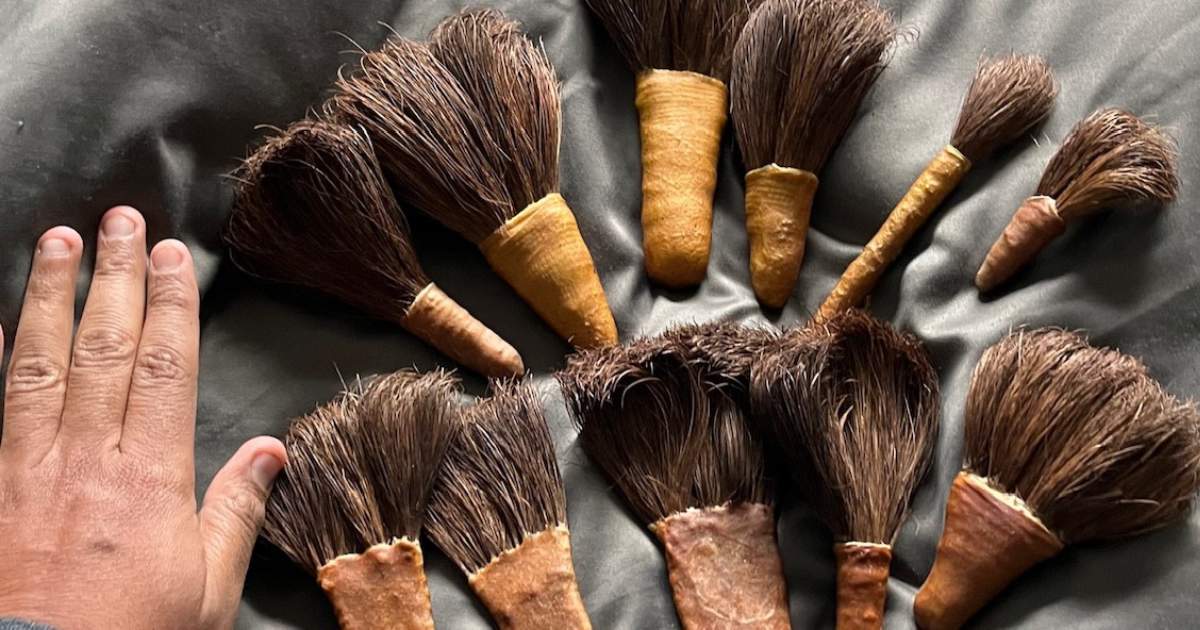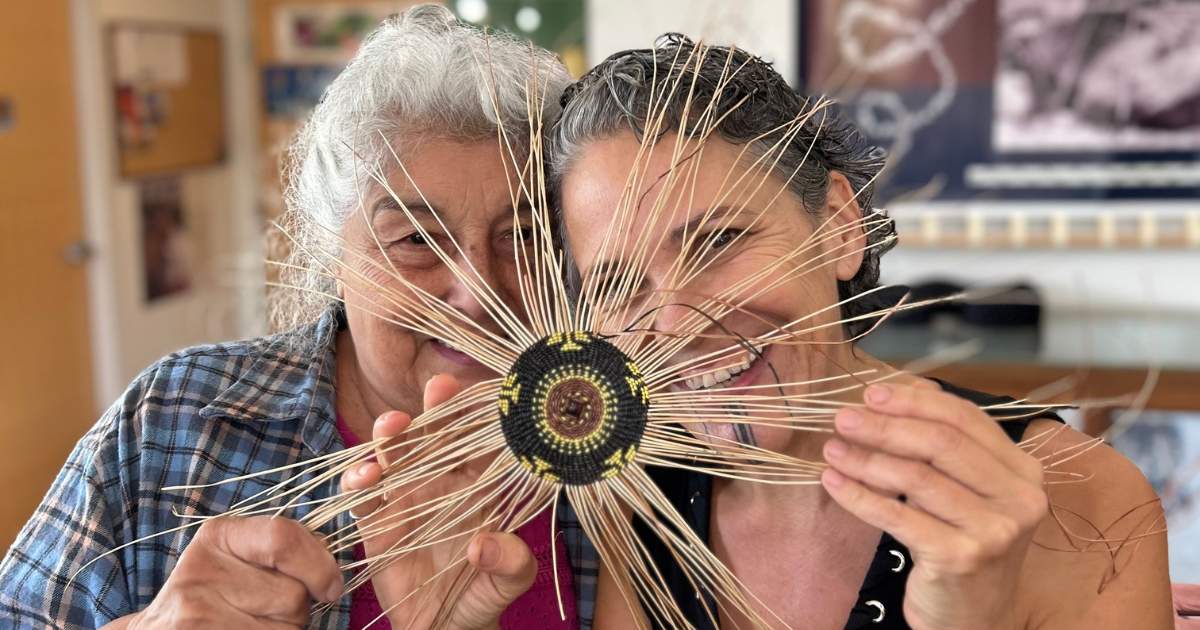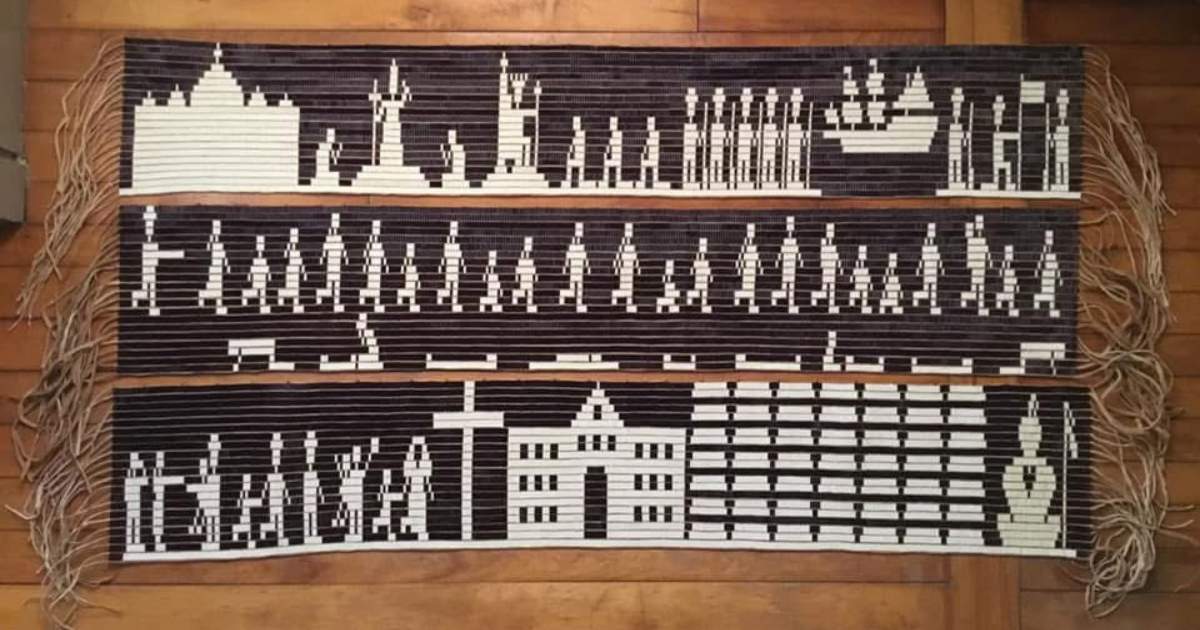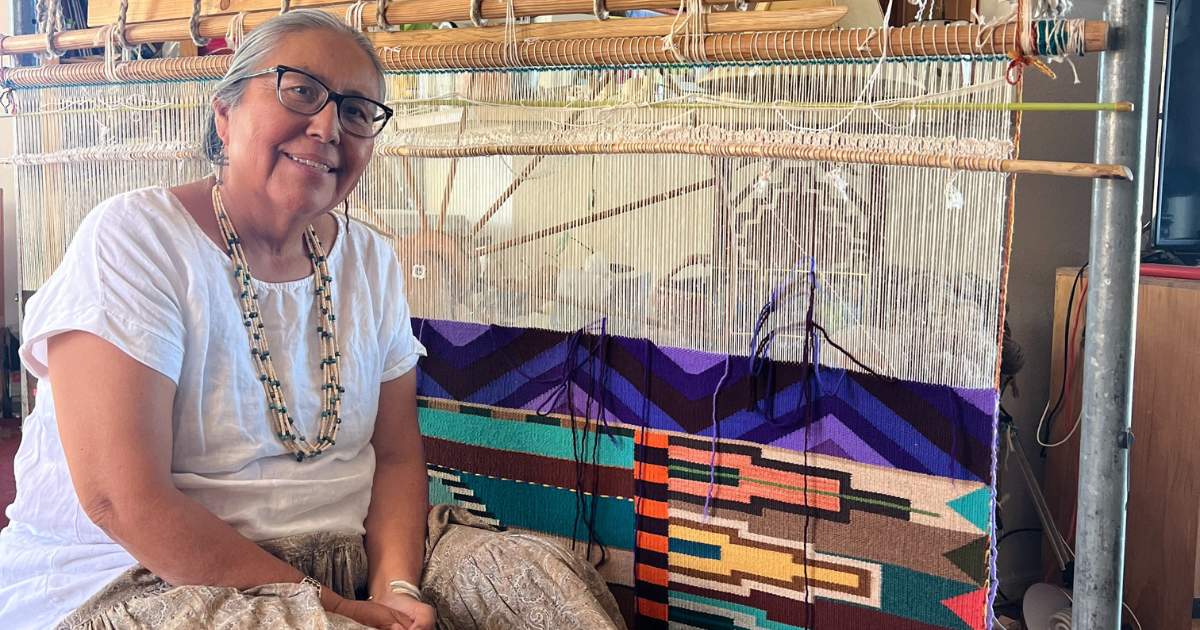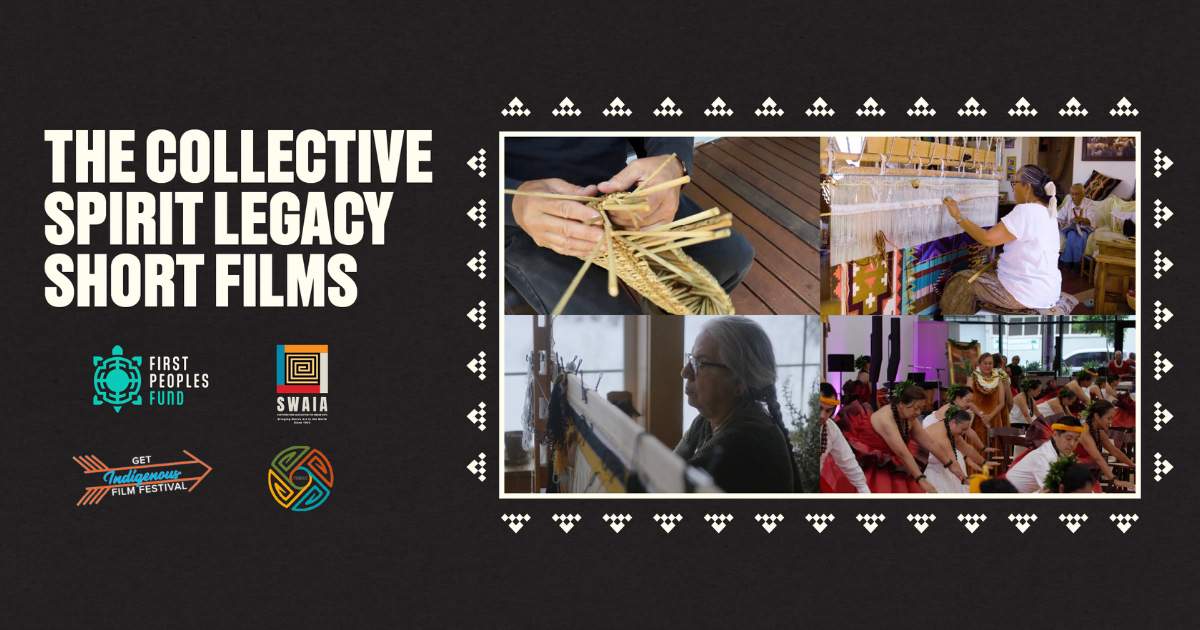
Culture Bearers Honored in Alaska and New York Through the Jennifer Easton Community Spirit Awards
Header Image: Photo by Roxanne Best (Colville)
By Sarah Elisabeth Sawyer (Choctaw Nation), Artist in Business Leadership Fellow 2017
The Jennifer Easton Community Spirit Awards honor and provide financial resources to Native culture bearers based on exceptional commitment to passing on cultural knowledge and sustaining community spirit. Marie Meade (Yup’ik) of Anchorage, Alaska, and Peter B. Jones (Onondaga) of Versailles, New York, embody this vision with their dedication, constant hard work, and generosity in their communities.
During recent First Peoples Fund-sponsored community honoring celebrations, Marie and Peter were honored for their work to preserve cultural traditions and practices and perpetuate traditional Native art at the community level.
Marie Meade - A Symbol of Strength and Resiliency
On stage, Marie listened to family and friends share about her life as a culture bearer during her Community Spirit Award (CSA) honoring in October 2018. Along with First Peoples Fund staff, they gathered at the Alaska Native Heritage Center in Anchorage.
“It was this wonderful feeling of being alive, breathing, hearing their words, and listening to them,” Marie says. “It was an experience.”
Friends and family met Marie’s gaze, and they felt it, too, because she almost didn’t make it to her honoring. This past summer, Marie was in the hospital on life support after a harrowing bout of food poisoning. Family and friends were fearful that she might not recover, however after weeks of worry Marie was finally well enough to return home, and return to carrying on the traditions she loves sharing with others.
Practicing and Sharing the Art
From a young age, Yup’ik song and dance have been an integral part of Marie’s life. When she dances, her regalia includes qaspeq (woman's dress), nasqerrun (headdress), naqugun (belt), piluguuk (fur boots), and tegumiak (dance fans).
Marie has traveled the world sharing her culture with a larger global community through the Thirteen Grandmothers Council.
“Every country we went to, the people would ask me, ‘Do you have a CD?’ I would say no, that I’ll make one. I kept saying that in almost every country, so I’d better do it,” she laughs. “I promised all those people.”
Marie is recording the songs with help from her son and the musical group he is a member of, Pamyua. She is also finalizing a three-year project to document, translate (from Yup’ik to English), and transcribe knowledge of their subsistence lifeways for a book.
“When I do that work, so much is gathered about the culture,” Marie says. “That is something I’ve been doing for about 40 years. The elders I worked with when I first started are all gone now. But what we documented is recorded from the life histories of those many, many elders.”
Along with mentoring her sons, grandchildren, and relatives, Marie has taught Yup’ik dance at the University of Alaska Anchorage for several years. She is a professor there for Yup’ik Language, Yup’ik Orthography, and Alaska Native Dance.
Nominating Marie
Marie’s Community Spirit Award nominator, Joy Demmert (Haida) — who knows her through Marie’s son — articulated her work in the community.
“You can see that she is a symbol of strength and resiliency when you watch her sing and dance like her ancestors have done for thousands of years,” Joy wrote in her nomination of Marie for the Community Spirit Award.
Though this isn’t the first time Marie has been recognized for her work, she felt the Community Spirit Award honoring was unique.
“It’s the most special award that I’ve received,” Marie says. “Gathering as a huge family and friends to experience it, food being shared, friendship –– all of it. Thank you to First Peoples Fund, and thank you to Jennifer Easton for her vision and her dream and her work.”
Peter B. Jones — Revitalizing an Ancient Artform
After studying at the Institute of American Indian Arts in the 1970s, Peter realized he knew more about Southwestern pottery than his own people’s pottery. That realization set him on a journey to research, document, and understand what pot making was in the 1500s. Peter’s commitment to learning continues today, along with teaching what he has found over decades of studying this ancient artform.
Practicing and Sharing the Art
Peter has strived for decades to bring Iroquois (Haudenosaunee) pottery back to life in his home communities where he works within the Six Nations Iroquois communities of the Seneca, Cayuga, Onondaga, Oneida, Mohawk, and Tuscarora people. His pots reflect what was originally made with clay gathered from stream beds and altered with the addition of crushed shell, crushed granitic rock and sand to create a clay body that was useful and durable after it was fired.
Peter produces art in his studio regularly and is preparing to teach another round of classes before the year ends.
“I don’t think we would have gotten the budget for the pottery if it hadn’t been for the Community Spirit Award,” Peter says. “It shows how necessary this is. We lost pottery once before in the 1500s. We’re just now bringing it back.”
“We lost pottery once before in the 1500s. We’re just now bringing it back.”
Peter is known in his community as a clay artist; his willingness to teach others has made him a sought-after mentor for those learning the practice. But it wasn’t until the Community Spirit Award that many people realized the scope of his work.
“You don’t have to move off the reservation to achieve the level of art that is recognized around the world,” he says. “I’ve been doing this for a living all my life, so I know it can be done.”
Culture Bearer Honored
Carol Ann Lorenz nominated Peter for the Community Spirit Award. She serves as a faculty member and museum curator at Colgate University in Hamilton, New York.
“I believe it is safe to say that Peter nearly single-handedly revived the making of clay pots in Iroquois country,” she wrote in her nomination. “Largely through his efforts, there are dozens of Haudenosaunee artists working in clay today.”
“I believe it is safe to say that Peter nearly single-handedly revived the making of clay pots in Iroquois country. Largely through his efforts, there are dozens of Haudenosaunee artists working in clay today.”
— Carol Ann Lorenz, nominator of Peter for the Community Spirit Award
This was brought out at Peter’s honoring in October 2018. The honoring was held in the Sully Huff Heritage Center, a dedicated building for arts and crafts on the Cattaraugus Indian Reservation.
“The award brought awareness to the forefront that we’re losing a lot of these crafts and arts,” he says. “It became a priority, whereas before it was an afterthought.”
With his ongoing work and promotion of traditional pottery making in his community, Peter sees the art continuing to the next generation.
“This returns to our people something that is uniquely ours,” he says.




































































































